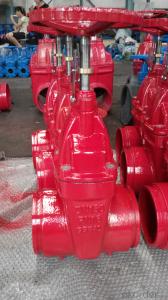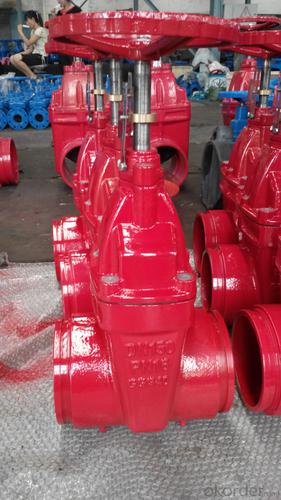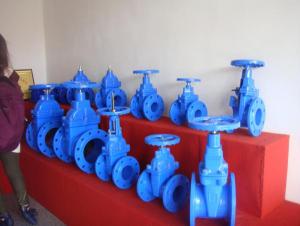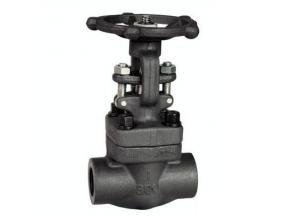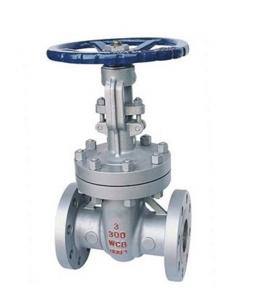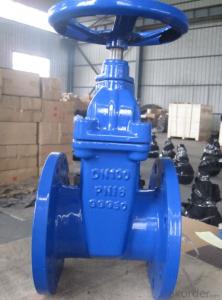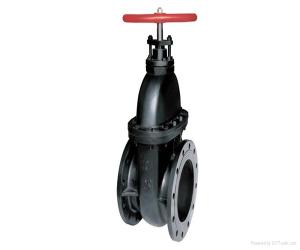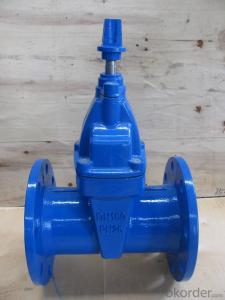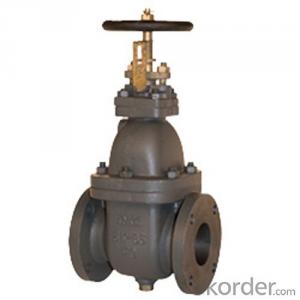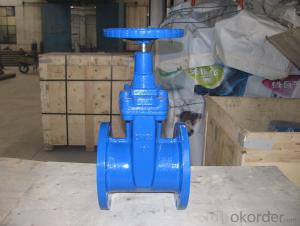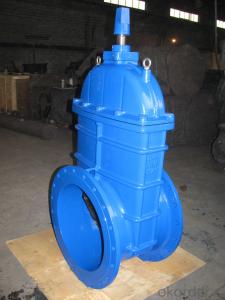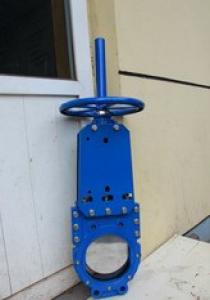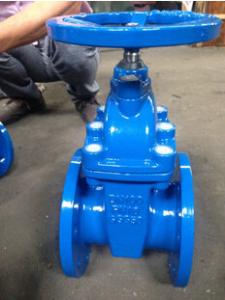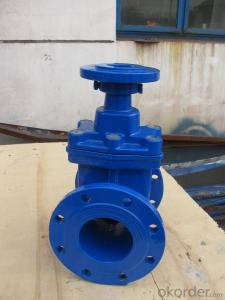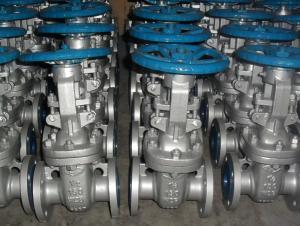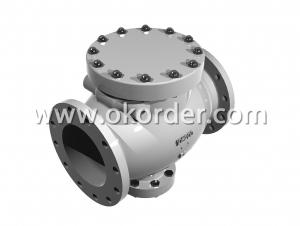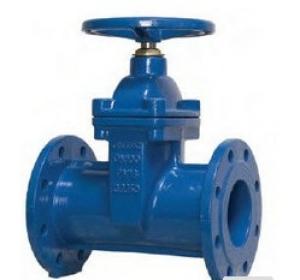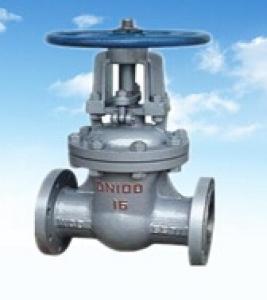Ductile Iron Gate Valve GGG50 Low Price
- Loading Port:
- China main port
- Payment Terms:
- TT OR LC
- Min Order Qty:
- 100 PCS
- Supply Capability:
- 1000 PCS/month
OKorder Service Pledge
OKorder Financial Service
You Might Also Like
1.Structure of Gate Valve Description:
A gate valve, also known as a sluice valve, is a valve that opens by lifting a round or rectangular gate/wedge out of the path of the fluid. The distinct feature of a gate valve is the sealing surfaces between the gate and seats are planar, so gate valves are often used when a straight-line flow of fluid and minimum restriction is desired. The gate faces can form a wedge shape or they can be parallel. Gate valves are primarily used to permit or prevent the flow of liquids, but typical gate valves shouldn't be used for regulating flow, unless they are specifically designed for that purpose. Because of their ability to cut through liquids, gate valves are often used in the petroleum industry. For extremely thick fluids, a specialty valve often known as a knife valve is used to cut through the liquid. On opening the gate valve, the flow path is enlarged in a highly nonlinear manner with respect to percent of opening. This means that flow rate does not change evenly with stem travel. Also, a partially open gate disk tends to vibrate from the fluid flow. Most of the flow change occurs near shutoff with a relatively high fluid velocity causing disk and seat wear and eventual leakage if used to regulate flow. Typical gate valves are designed to be fully opened or closed.When fully open, the typical gate valve has no obstruction in the flow path, resulting in very low friction loss.
2. Main Features of the Gate Valve:
• Valve body cavity using non-toxic epoxy resin,both inside and outside flashboard completely is coated with rubber
• Free of water pollution
• High manufacturing accuracy
• High strength
• Environmental protection and energy saving
• Good visual effect
3. Images
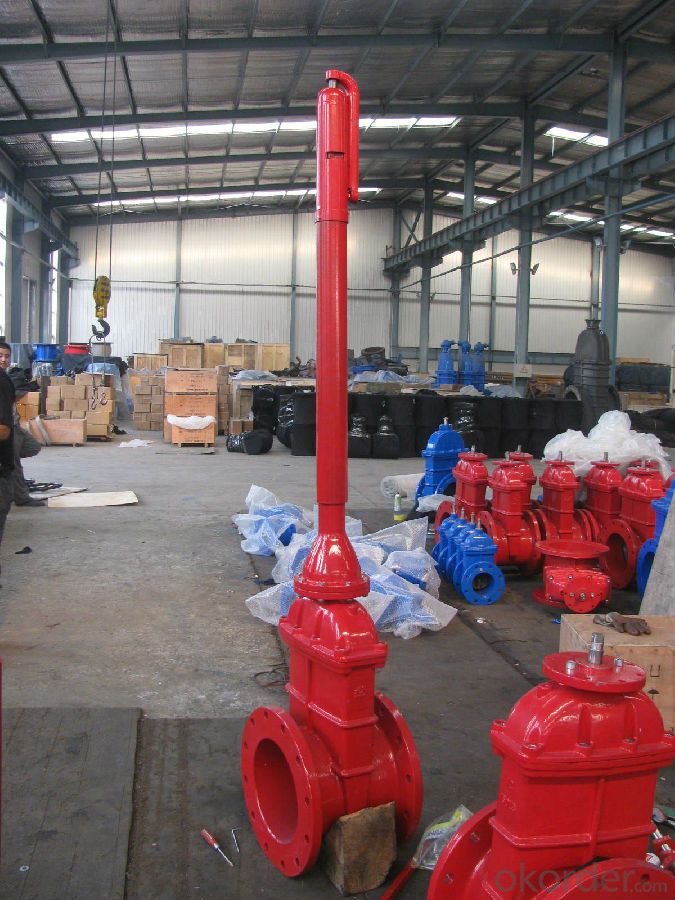
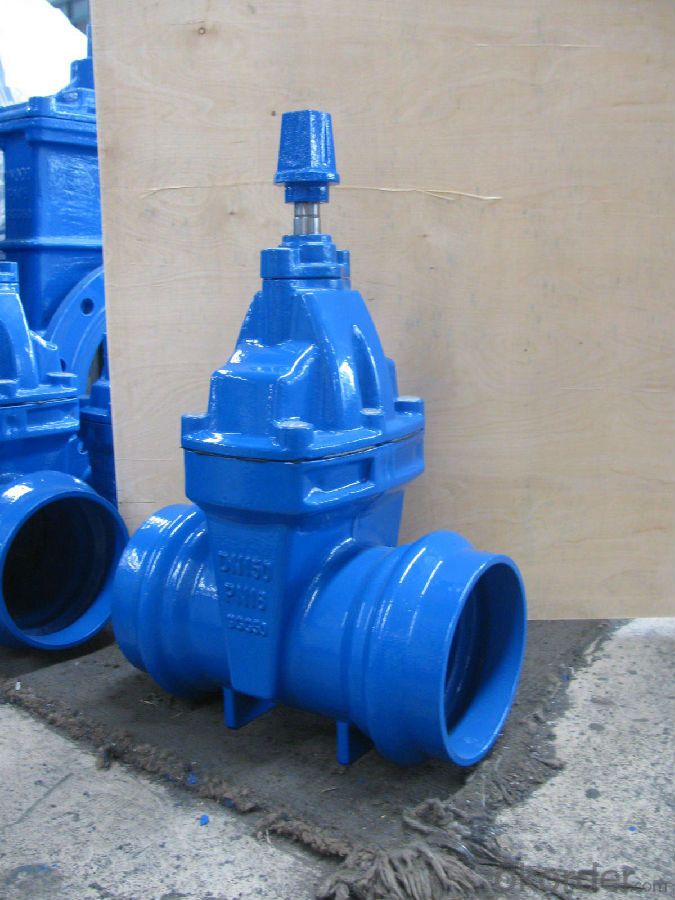
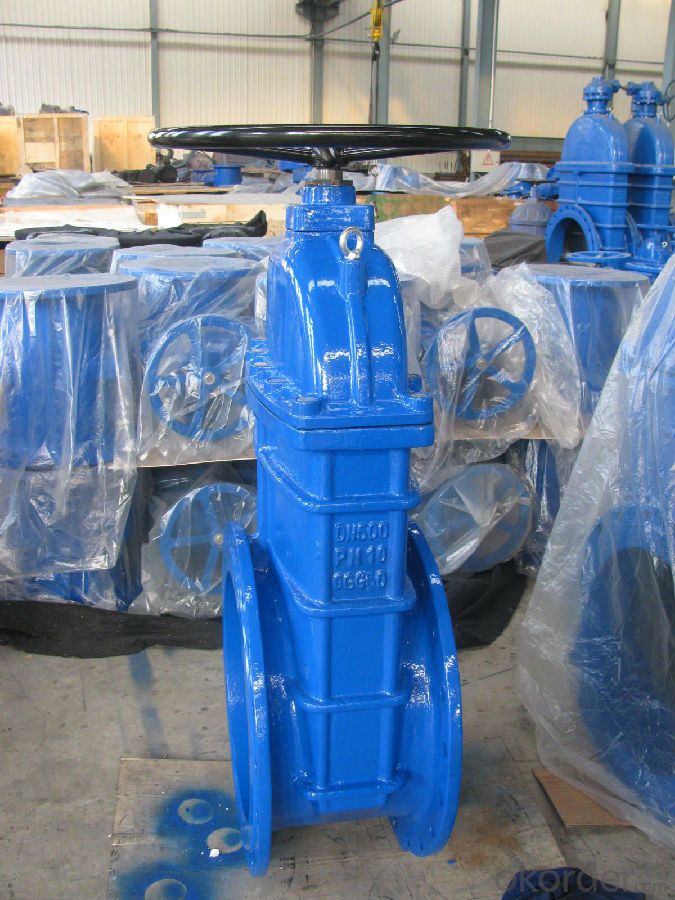
4. Gate valve Specification
Gate valve
Ductile iron gate valve
Flange Gate valve
Our company can produce all kinds of valves, If you have any inquiry, please contact us, we will offer you our best price.
1,good quality and competitive prices |
2,WRAS,CE,ISO 9001 approved. |
3,AKZO epoxy coating available |
Flanged ends according to BS,DIN,MSS,ANSI JIS |
Designed according BS,DIN,MSS,ANSI JIS |
Ductile Iron or Cast Iron body, bonnet and handwheel |
Cast iron wedge, NBR/EPDM coated |
Stainless steel stem, epoxy coating |
Test: BS,DIN,MSS,ANSI JIS |
5.FAQ
1. What's are the characteristics of gate valve?
The distinct feature of a gate valve is the sealing surfaces between the gate and seats are planar, so gate valves are often used when a straight-line flow of fluid and minimum restriction is desired. The gate faces can form a wedge shape or they can be parallel.
2. What is the work principle of gate valve ?
The gate faces can form a wedge shape or they can be parallel. Gate valves are primarily used to permit or prevent the flow of liquids, but typical gate valves shouldn't be used for regulating flow, unless they are specifically designed for that purpose. Because of their ability to cut through liquids, gate valves are often used in the petroleum industry.
3. What is the structure?
Bonnets provide leakproof closure for the valve body. Gate valves may have a screw-in, union, or bolted bonnet. Screw-in bonnet is the simplest, offering a durable, pressure-tight seal. Union bonnet is suitable for applications requiring frequent inspection and cleaning. It also gives the body added strength. Bolted bonnet is used for larger valves and higher pressure applications.
- Q: What do you mean by "2" and "200 CF8M"?
- CF8M is stainless steel, and 2 is caliber 50200 and should also be bore
- Q: What are the specifications of the gate valves? Does the work pressure need to be marked separately?
- According to domestic valve model standards, the valve model is by the valve type, gate valve drive mode, gate valve connection, gate valve structure, sealing material, valve body material code to indicate.1, gate valve type code named Z;2, gate valve drive mode code by letters, common 2- electric hydraulic, 9- electric, 6- pneumatic, 5- bevel gear drive, 3- turbo worm; manual do not need to write out;3, gate valve connection form code with letters to indicate, 1- internal thread, 2- external thread, 4- flange type, 6- welding, 7- pairs clamp type, 9- clamp, 0- card sleeve;4, the valve structure of code, 0- flexible wedge, 1- rod single wedge gate valve, 2- rising stem wedge gate valve, 3- parallel single gate valve, 4- parallel double gate valve,
- Q: The difference between cut-off valve and gate valve
- Structurally, the gate valve for the gate, down to the front and back seat seal; globe valve with spherical, taper and flat spool, down to the valve seat seal. Functional stop valves are generally used for pressure flow control. Gate valves are used for isolation.
- Q: Z45T-10 what kind of material is the gate valve?
- Cast iron, sealed with copper alloy inside. Shanghai Yu Cheng fluid on the professional production of this thing,
- Q: What do you mean by gate valve type RVHX-0150-10 and Z45X-16Q?
- Z45x-16q, Z means gate valve, 4 means flange connection, 5 refers to dark rod gate valve, X means rubber seal, 16 refers to nominal pressure 1.6MpaRVHX means manual gate valve, 150 refers to the caliber of DN150, and 10 indicates nominal pressure of 1.0MPa
- Q: What is the wedge type gate valve wedge is what mean
- According to the gate can be divided into the form of parallel wedge type. (1) wedge type gate. Wedge type gate the sealing surface of a certain angle with the vertical center line of the gate, the size of angle depends on the medium temperature and diameter size. General medium temperature is higher, and the greater the inclination angle is bigger, in order to prevent the temperature change when the gate is stuck, unable to open. Wedge gate sealing than the parallel well.
- Q: Yes, soft sealing gate valve can reach 25 kilograms, Fujian light valve company has this type of soft sealing gate valveAnonymous browsing | 28 times
- Soft seal butterfly valve seal is good, but can only withstand up to 16 pressure, or the plastic can not stand. A short period of time is OK, and it's also related to the workmanship and quality of the factory. The quality is poor.
- Q: Function of gate valve
- The valve (including the valve and valve) is a fluid pipeline control device, its basic function is to connect or cut off the pipeline medium circulation, changing the medium circulation, change the direction of the flow medium, medium pressure and flow regulation, to protect the normal operation of pipeline equipment.
- Q: What does valve qz45x - 10q mean?
- Crown valve pressWhat does Q stand for? I'm not sure. It's probably made of ductile iron"Z" means "gate valve"4 represents flange connection5 represents the dark bar (1 represents the Ming pole)X stands for rubber seal and soft seal10q stands for 10 pressure
- Q: What does gate valve DN80-PN16-QT450 mean?
- The outer diameter of the pipe is usually 89mm;"PN16" means the nominal pressure of the gate valve is 16Mpa;QT450 QT said, nodular cast iron, tensile strength is more than 450MPa 450.
Send your message to us
Ductile Iron Gate Valve GGG50 Low Price
- Loading Port:
- China main port
- Payment Terms:
- TT OR LC
- Min Order Qty:
- 100 PCS
- Supply Capability:
- 1000 PCS/month
OKorder Service Pledge
OKorder Financial Service
Similar products
Hot products
Hot Searches
